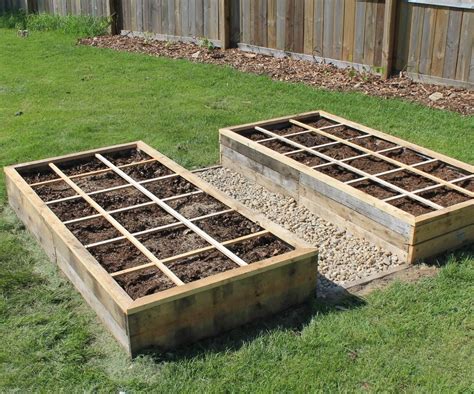How To Build Raised Garden Beds: A Step-by-Step Guide
Building raised garden beds offers numerous advantages over traditional in-ground gardening. They improve drainage, warm up faster in the spring, and provide better control over soil composition. This guide provides a comprehensive, step-by-step approach to building your own raised beds, optimizing them for both functionality and aesthetics.
Choosing the Right Materials
The material you choose for your raised garden beds significantly impacts their longevity and cost. Popular options include:
Untreated Lumber:
- Pros: Relatively inexpensive, readily available, and blends naturally with the garden environment. Cedar and redwood are naturally rot-resistant.
- Cons: Untreated lumber will eventually rot, requiring replacement after several years. Pressure-treated lumber should be avoided due to potential chemical leaching into the soil.
Recycled Materials:
- Pros: Environmentally friendly and often cost-effective. Options include repurposed pallets (ensure they're free of chemicals), bricks, and stones.
- Cons: May require more time and effort to assemble and may not be as aesthetically pleasing as other options. Thoroughly clean and inspect recycled materials before use.
Metal:
- Pros: Durable and long-lasting, requiring minimal maintenance. Corrugated metal is a particularly cost-effective option.
- Cons: Can heat up significantly in direct sunlight, potentially harming plants. Requires proper rust prevention measures.
Concrete Blocks:
- Pros: Incredibly durable and long-lasting, providing excellent support for heavy soil.
- Cons: Can be expensive and may require some masonry skills for construction.
Planning and Design
Before you start building, careful planning is crucial:
Size and Shape:
Consider the size of your garden and the space available. Rectangular beds are easiest to build, but curved or other shapes can add visual interest. Aim for a width that allows easy access to all plants (generally no more than 4 feet). Length can be adjusted to your needs.
Location:
Choose a location that receives at least 6-8 hours of sunlight per day. Ensure the area is relatively level and has easy access to a water source.
Soil Considerations:
Raised beds allow for complete control over soil quality. Plan to fill your beds with a rich, well-draining soil mix. Consider adding compost and other organic matter to enhance fertility.
Building Your Raised Garden Bed: A Step-by-Step Guide
This guide focuses on building a raised bed from untreated lumber, but the principles can be adapted for other materials.
Step 1: Cut the Lumber:
Cut your lumber to the desired dimensions for the sides and ends of your bed. Ensure all cuts are square and accurate for a sturdy structure.
Step 2: Assemble the Frame:
Use screws or nails to join the lumber pieces, creating a rectangular frame. Pre-drill holes to prevent splitting the wood.
Step 3: Add Support:
For taller beds, consider adding cross-braces for extra stability. This is especially important if using lighter materials.
Step 4: Line the Bed (Optional):
Lining your bed with landscape fabric helps prevent weed growth and retain moisture. This is particularly helpful if using untreated lumber.
Step 5: Fill with Soil:
Fill the bed with your prepared soil mix. Aim for a depth of at least 12 inches for most vegetables.
Maintaining Your Raised Garden Beds
Regular maintenance will ensure your raised garden beds thrive for years to come. This includes:
- Weed Control: Regularly remove weeds to prevent competition with your plants.
- Watering: Water deeply and consistently, especially during dry periods.
- Fertilizing: Supplement soil nutrients with compost or other organic fertilizers.
- Soil Improvement: Top-dress with compost annually to maintain soil fertility.
Building raised garden beds is a rewarding project that significantly enhances your gardening experience. By following these steps and choosing the right materials, you can create a beautiful and productive garden space for years to come. Remember to adapt these instructions to your specific needs and chosen materials. Happy gardening!
